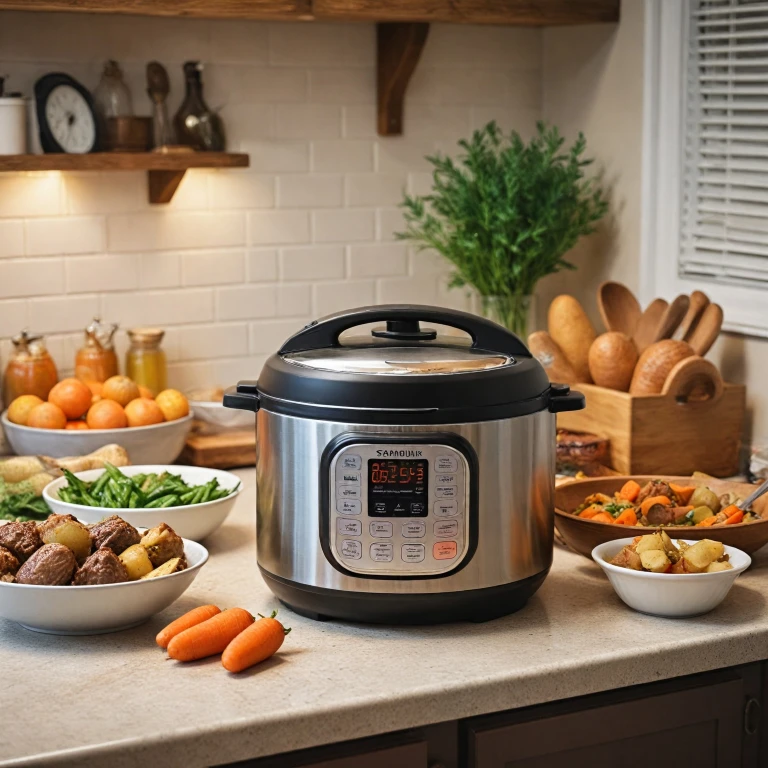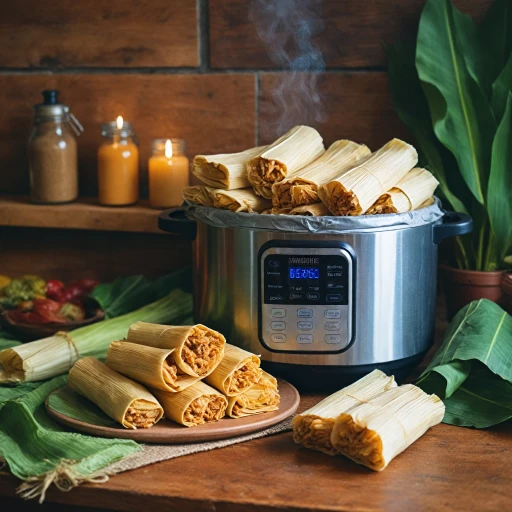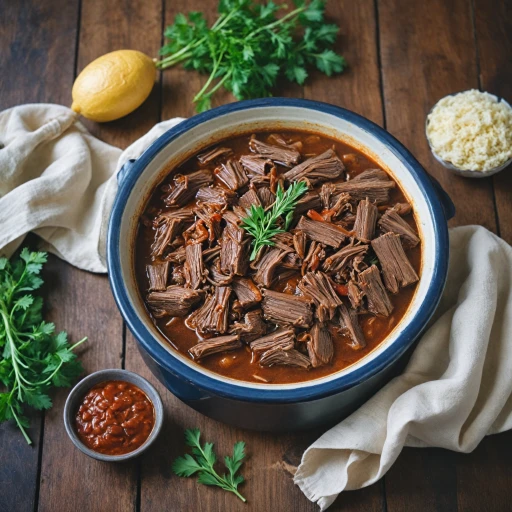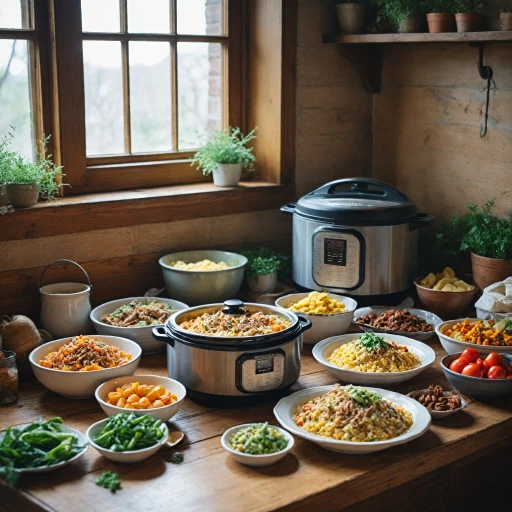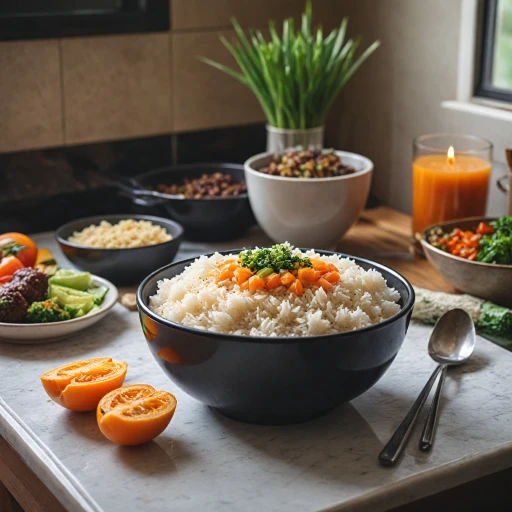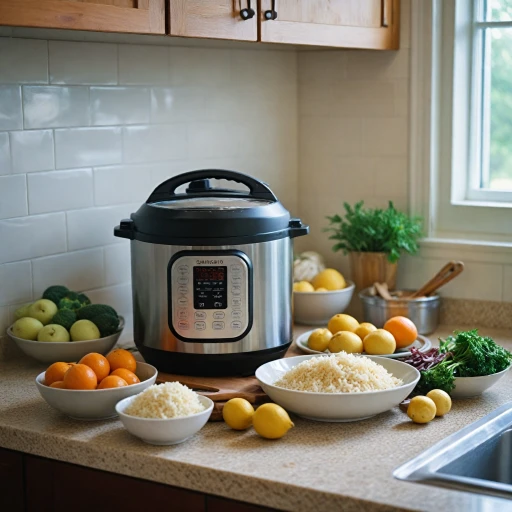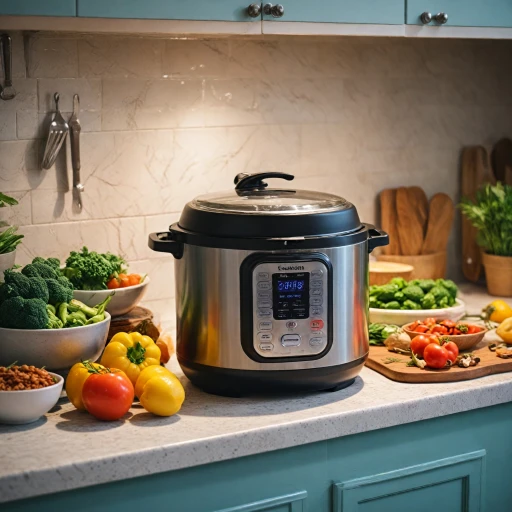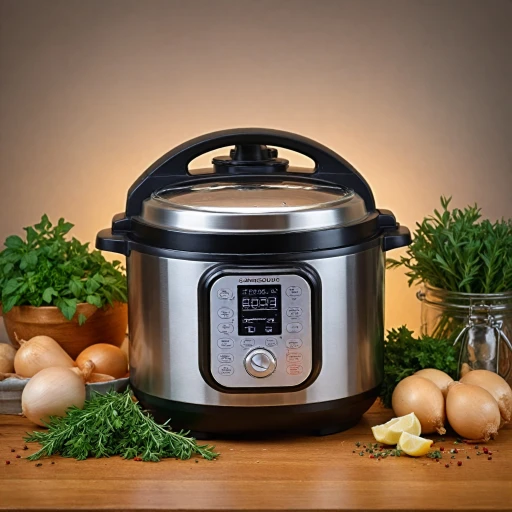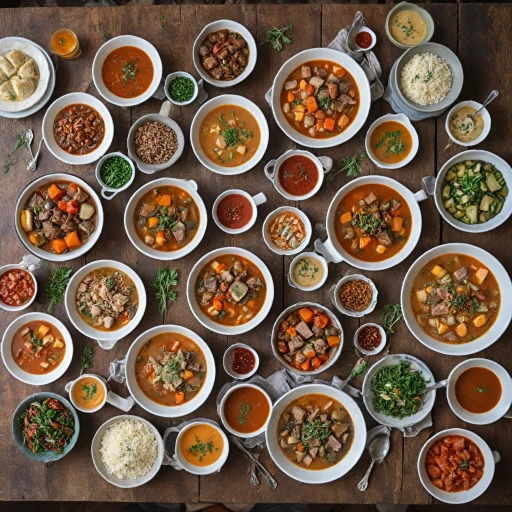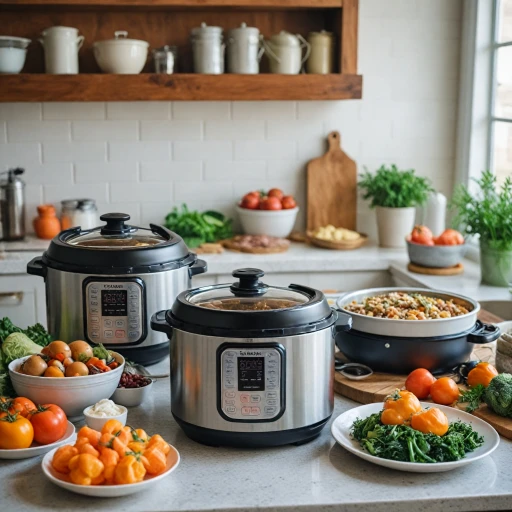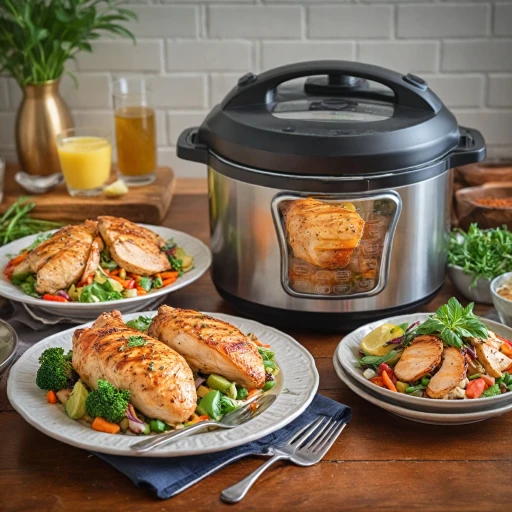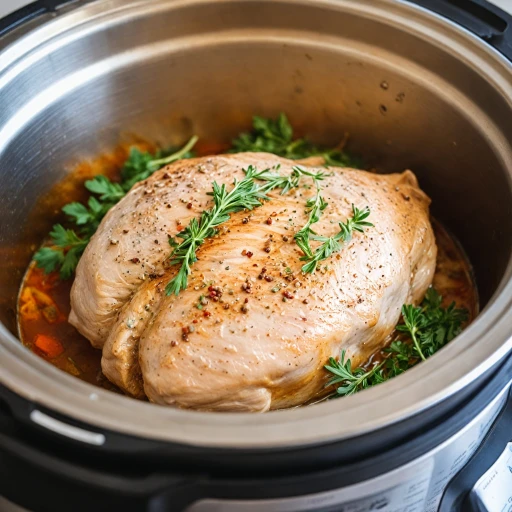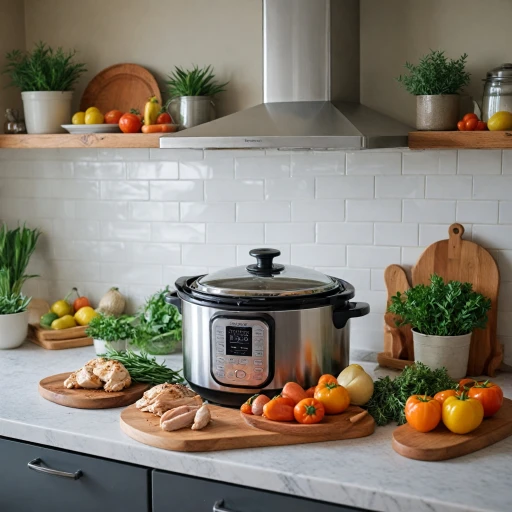
Understanding Your Electric Pressure Cooker
Getting Started: Embrace the Modern Convenience
An electric pressure cooker is an invaluable asset in any kitchen, revolutionizing the way you prepare traditional beef stew. Whether you own an Instant Pot or another brand, these devices are designed to make cooking both swift and effortless.
Before diving into your favorite recipes, familiarize yourself with the basic features. Most models offer varied cooking modes beyond just high pressure, like sauté and keep warm, to enhance your culinary experience. It's essential to understand settings to maximize the efficiency and outcome of your beef stew recipe.
Why High Pressure?
One standout advantage is how the pressure cooker reduces cook time significantly. Beef stew that typically requires hours in a slow cooker can be completed in a fraction of the time, thanks to high pressure cooking. This rapid process helps tenderize stew meat and infuse sauce quickly with complex flavors.
Key Components to Focus On
- Seal and Pressure Release: Ensure the sealing ring is intact and correctly placed. Familiarization with natural and quick release methods is crucial for safely handling pressure release.
- Timer and Settings: Accurate timing is essential; most beef stew recipes require around 30 to 40 minutes at high pressure. This precision enhances flavors and ensures tender meat.
For those eager to explore more about how to use these versatile devices and discover numerous meal ideas, explore the world of pressure cooker meals and expand your culinary repertoire.
Selecting the Right Ingredients for Beef Stew
Selecting High-Quality Ingredients for a Savory Beef Stew
When preparing beef stew in an electric pressure cooker, the selection of ingredients can significantly impact the flavor and texture of your final dish. Choosing the right components not only enhances the taste but also complements the quick cooking method that pressure cookers offer. To start, select quality stew meat, ideally well-marbled pieces cut from the chuck or round. These cuts are rich in collagen, which breaks down under high pressure and results in tender beef. Look for fresh, vibrant colors in your meat, avoiding any that appear dull or brownish. For the base of your stew, consider a mix of vegetables like potatoes and carrots. These staples hold up well during the cooking process, absorbing the flavors from the broth while maintaining a pleasing texture. Choose firm potatoes and fresh, crisp carrots for the best results. As for the liquid components, beef broth provides a robust foundation. Opt for low-sodium broth to better control the saltiness, adding salt and pepper to taste later. A dollop of tomato paste brings richness and depth, blending beautifully with the savory notes of Worcestershire sauce. Herbs and spices are your allies in building complex flavors. Classic additions like bay leaves, thyme, and rosemary become aromatic under pressure, imbuing the stew with fragrant layers. Adjust the spice levels according to your preference, balancing them with the natural flavors of the beef and vegetables. To explore more about selecting ingredients and their interaction in pressure cooking, check out this essential guide on cooking with an electric pressure cooker, which can further elevate your culinary skills. By carefully choosing your ingredients, you're setting the groundwork for a flavorful, hearty meal that's perfect for family dinners or cozy gatherings. Stay mindful of the balance between your core components, and you're well on your way to crafting the perfect beef stew, ready to serve warm after just a few minutes in the instant pot.Step-by-Step Guide to Cooking Beef Stew
Step-by-step Cooking of the Perfect Beef Stew
Cooking beef stew in an electric pressure cooker can be a straightforward process when approached with a clear step-by-step guide. Once you have selected the freshest ingredients, follow these steps to craft a hearty and delicious meal. First, start by preparing your ingredients. With the pressure cooker set to sauté mode, brown the stew meat on all sides in a bit of oil. This initial browning adds depth to your beef stew and enhances the final flavor. Once the meat is seared, add diced onions, carrots, and potatoes to the pot. Stir occasionally, allowing the vegetables to gather some of the flavors left by the meat. Next, incorporate the liquids and seasoning. Add beef broth, ensuring there's enough to cover the ingredients, but below the fill line. Introduce tomato paste, a dash of Worcestershire sauce, and a sprinkle of salt and pepper to taste. You may refer to similar techniques detailed in this guide on chicken cooking times to better understand liquid ratios. Once all the ingredients are combined, secure the lid and set your instant pot to high pressure. Cook the stew for about 35 minutes, allowing the flavors to meld perfectly. After the cooking time, perform a quick pressure release carefully. This means turning the pressure release valve to let out steam, ensuring not to burn yourself in the process. Once pressure is released, carefully open the lid. Before serving, adjust seasoning, adding more salt, pepper, or Worcestershire sauce if needed. This method allows the beef and vegetables to cook evenly and tenderly, giving you a pot beef stew full of rich flavors. By following this procedure, you'll ensure an optimal balance of taste and texture in your stew, replicable in future recipes.Troubleshooting Common Issues
Addressing Common Setbacks in Your Beef Stew Journey
Cooking beef stew in an electric pressure cooker can be an art. While these devices provide an efficient and quick way to prepare meals, they are not without their challenges. Here, we explore some typical issues you might encounter when concocting your perfect stew recipe, and how to effectively troubleshoot them.
Challenge 1: Meat Not Tender
One common issue when making beef stew in a pressure cooker is finding that the meat is not as tender as expected. If your stew meat is tough, it may be due to insufficient cooking time. Consider adding an additional 5-10 minutes at high pressure. It's important to note that tougher cuts of beef require more time to break down the connective tissues, so patience is key.
Challenge 2: Sauce Too Thin
If your sauce is on the watery side, there are a few tricks to thicken it up. First, use the sauté function after pressure cooking to allow some of the excess liquid to evaporate. Alternatively, you can create a slurry with a tablespoon of cornstarch and water, and mix it into the sauce. Adding tomato paste before pressure cooking can also help improve consistency. Remember, the richness of the beef broth and worcestershire sauce can enhance the thickness and flavor of your stew.
Challenge 3: Vegetables Overcooked
Overcooked vegetables are a frequent mishap when using an electric pressure cooker. To avoid mushy potatoes and carrots, consider staggering their addition. Add the beef to start, and then halfway through the cooking time, use a quick release, add the vegetables, and pressure cook for the remaining minutes required. This method ensures they maintain their texture without turning to mush.
Challenge 4: Pressure Release Issues
Choosing between natural and quick pressure release can make a crucial difference in your stew's quality. The instant pressure release method can cause a violent boiling that might disrupt the texture of the stew. On the other hand, a natural release allows the cooking process to finish gently, promoting a better meld of flavors and tenderness in the meat. For a perfect consistency, practicing this approach might be necessary.
By addressing these challenges, you can refine your pot beef stew recipe, ensuring every cook time results in a deliciously savory dish that is celebrated at any family gathering. With a keen approach to these issues, your electric pressure cooking endeavors can become more seamless and rewarding.
Enhancing Flavor with Spices and Herbs
Elevating Your Beef Stew with Herbs and Spices
Herbs and spices are the cornerstone of any flavorful beef stew recipe. While you've selected your ingredients like beef, potatoes, and carrots, it's the spices that enhance their natural flavors and bring out the richness of the stew. Here's how to use them effectively in your electric pressure cooker.Choosing the Right Seasonings
Consider these essential seasonings to elevate your stew:- Salt and Pepper: Basic yet essential, these provide a balanced foundation.
- Worcestershire Sauce: Adds a layer of umami, complementing the meat's richness.
- Garlic and Onion Powder: Enhance the aromatic base without the need for fresh ingredients.
- Herbs: Bay leaves, thyme, and rosemary bring depth to the stew. Fresh or dried versions both work well.
- Tomato Paste: Adds a rich, tangy base and thickens the broth.
Cooking Time and Pressure Tips
When cooking in your electric pressure cooker, consider how the pressure and cook time affect the herbs and spices:- High Pressure for Minutes: Too long at high pressure can mute some flavors. Adjust according to your cook time.
- Adding Spices Early vs. Late: Add hearty spices like bay leaves at the beginning for infusion, while delicate herbs like parsley should be stirred in after the pressure release for maximum flavor.
Experimenting with Flavors
Don’t hesitate to try new spice combinations. Adding other spices like paprika or even a pinch of cayenne pepper can give your stew a unique kick. If you’re aiming for an easy instant meal, ensure you’ve taste-tested a small batch first for adjustments. Ultimately, spices are your secret weapon in transforming a basic beef stew into a culinary masterpiece. As you perfect your stew meat and broth combination, remember that the right seasonings can make it unforgettable.Serving and Storing Your Beef Stew
Presentation and Enjoyment
Once your beef stew is ready, it's time to savor the warm, comforting flavors you've patiently developed in your electric pressure cooker. Start by carefully opening the lid after ensuring a proper pressure release. The aroma of the beef, broth, and herbs will fill your kitchen, creating an inviting atmosphere.
Serving Suggestions
For an aesthetically pleasing presentation, ladle the stew into a bowl, ensuring a balance of meat, potatoes, carrots, and a rich, savory sauce. Adding a sprinkle of fresh herbs such as parsley or thyme on top enhances both the flavor and visual appeal.
If you're looking to elevate the dish further, consider serving the stew alongside crusty bread or creamy mashed potatoes. These sides can complement the rich flavors of the stew, offering a fulfilling meal experience.
Storing Leftovers
Preserving the deliciousness of your stew is simple. Allow the stew to cool before transferring it to an airtight container. It can be refrigerated for up to 4 days. If you'd like to store it longer, freezing is a great option. Use freezer-safe containers, and the stew can last up to 3 months. To reheat, simply use the stove or your electric pressure cooker to bring it back to life.
By following these steps, you can ensure that your beef stew remains delicious and satisfying, ready to be enjoyed at any time.
